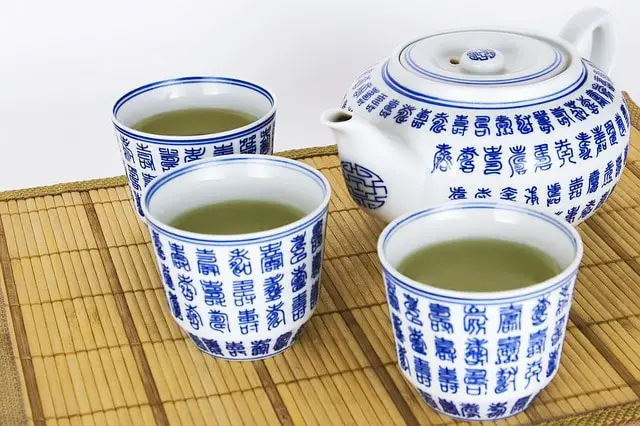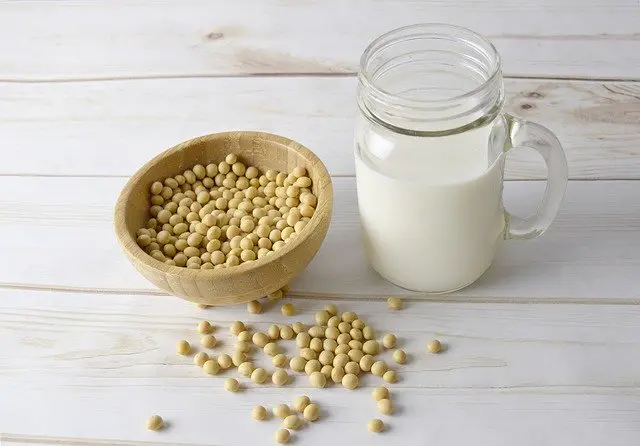
Green tea and milk are an unusual combination and it isn’t the healthiest option out there either.
Many of my clients choose to add milk to green tea to improve the flavor. However, as I have to explain to them, there is a very specific way that they need to do this.
In this post, I will cover what you need to know about green tea with milk, how to make this drink properly, and understand some of your alternatives. Let’s begin!
Contents
If you have ever tried to make your tea creamier, there is a good chance that you will have either reached for dairy milk or creamer.
This isn't something that you can do with green tea, however.
Dairy milk can harm the nutrients in green tea. This has to do with how the proteins in cow’s milk interact with green tea.
Understand, most of the health benefits of green tea are derived from components known as catechins.
As such, the more catechins that your body can absorb, the better.
Unfortunately, the milk protein reduces the biovailability of these catechins.
Due to this, green tea is rendered less healthful and will not result in as many benefits for you.
Thus, if you do want to enjoy green tea with milk, you need to opt for a non-dairy, plant-based option.

Since you should use plant-based milk, here is how you can use these non-dairy milk with your green tea.
It should be noted that the same study that found dairy milk to reduce the effectiveness of green tea also pointed the finger at soy milk.
Soy milk is pretty high in proteins. As such, there is a good chance that these proteins will impact the catechins in green tea as well.
However, it should be to a lesser degree.
Now, there is some risk of your soy milk separating in your hot tea. This is often due to the change in temperature.
To avoid this, pour the desired amount of milk into your cup. Then, slowly pour in the green tea while mixing.
This should help to negate the separation.

Almond milk is thinner and doesn’t contain much protein. Due to this, you shouldn’t face any problems when adding it to your tea.
Furthermore, almond milk tends to be rather low in calories so it shouldn’t have too much of an impact on your overall calorie consumption.
The only thing to be mindful of is the taste. Some brands of almond milk can have a slightly nutty taste.
Thus, you need to be careful about the kind of green tea that you add it to.
It is best to opt for a green tea with a similarly nutty flavor – such as genmaicha. This way, the flavor profile of the tea will not have to compete with the taste of the milk.
One of the reasons you may want to add milk to your green tea is because you enjoy a creamy texture.
If this is the case, then you may find that soy milk and almond milk are lacking in this department.
Cashew milk, however, is the perfect candidate.
It is quite creamy but has few proteins. This helps to maintain the healthy elements of green tea.
As an added bonus, cashew milk is naturally a little sweeter and doesn’t have as much of a nutty taste.
Due to this, you can use it with a wider variety of green teas.
If you don’t want to overpower the natural notes of green tea, consider using rice milk.
By itself, it has a very subtle flavor. As such, it will allow the flavor profile of the green tea to shine through.
Some brands may have a slightly salty taste, if so opt for a green tea like Gyokuro. Since this tea has a slight umami flavor, the saltiness of the rice tea will not be as noticeable.
You should be aware that rice milk can be rather watery.
So, if you don’t want to dilute your cup of green tea, add less water when brewing it. When you top it up with rice milk, the water content should level out.
Let’s face it, the taste of plant-based milks aren't for everyone. There are plenty of people that may not enjoy these unfamiliar flavors.
If you are a part of this group, there may be another avenue available to you – oat milk.
Unlike other plant-based milks, oat milk has a taste and texture that is similar to dairy milk. So, you may find it easier to get used to.
Have you ever wondered why you don’t add milk to green tea?
It is a rather common practice to add milk to black tea or blends such as English breakfast, perhaps even Earl Grey.
So, why is green tea exempt from this list?
Well, that all has to do with the flavor profile of green tea. If you have ever tested out different varieties of green tea, then you know that there is some variation in the tastes.
Green teas can be grassy, floral, vegetal, or some combination of these flavors.
Regardless, you will typically describe green tea as being light, even sprightly.
Such flavor profiles aren't complemented by the addition of milk. They either drown out the delicate flavors or contrast sharply with them.
This is why most people steer clear of adding milk to their green tea.
For milk to work well with teas, they have to be strong, bold, and robust – characteristics of black tea.
Now, this doesn’t mean that you can’t add milk to green tea. Instead, you have to be careful about the kind of milk you use and how you add it.
On its own, green tea tends to have no calories at all. This is just one of the ways that it aids in weight loss.
Milk, however, does boast around 9 calories per tablespoon.
On the surface, this doesn’t seem like much. However, if you drink several cups of green tea a day, it can add up.
And, if you drink full-fat milk, there is also the additional fat content to think about.
There is also the fact that if you are adding milk to your green tea, that you may also be adding sugar.
Needless to say, this can cause your daily calorie consumption to surge even more.
The other way that green tea can aid with weight loss is by increasing the number of calories you burn. This is known as diet-induced thermogenesis.
Milk proteins, though, interfere with this impact. However, this is only noticed when milk and green tea are combined.
So, even though you may end up drinking more green tea, you aren't losing as much weight as you would like.
Related Articles
How to Make Green Tea Taste Better: Your Top 10 Tips for a Pleasant Brew
It has been established that it isn't a great idea to add any kind of milk to your green tea.
So, let’s consider how you can improve the taste of green tea, by itself.
One of the easiest ways to do this is to buy a better quality of green tea.
If you are a novice green tea drinker, there is a good chance that you have opted for a poor-quality green tea.
This is because most of the options that you can find on the shelves of your local supermarket tend to be for people with unrefined palates.
Therefore, you may want to look for a more premium option.
Understand, the higher quality teas are more likely to be lighter and sweeter. The cheaper ones can be rather bitter or full-bodied.
If you were to try a premium, loose-leaf brand, you would instantly be able to tell the difference.
Now, yes, these types of green tea may be more expensive. However, it will be fully worth the investment.
Related Articles
Forty Shades of Green: The Best Green Tea Brands for a Refreshing Brew
The More You Know: How to Choose the Best Loose Leaf Tea in the Market
Green tea is a rather delicate type of tea. As such, it needs to be carefully brewed.
To begin with, don’t overheat the water. It is important to take the kettle off the stove before it begins to boil.
For greater accuracy, you may want to buy an electric kettle that clearly shows the ideal temperature for green tea.
Another mistake that you should avoid is over-brewing green tea. The longer the tea leaves are left in the water, the more bitter the brew becomes.
On average, don’t leave the leaves in for more than 30 seconds to a minute.
Adding milk to green tea isn't as straightforward as you would have imagined. This is because there are so many factors to consider.
Now that you have the relevant information, you will know how to add milk to your brew in just the right way.
